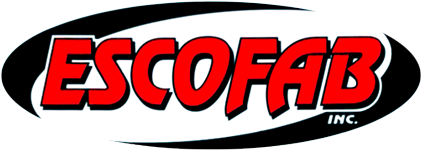 Designing a product in a CAD (Computer-Aided Design) software is only the first step towards creating a successful product. To turn a CAD design into a physical reality, it is crucial to optimize the design for the specific manufacturing processes that will be used. This optimization ensures that the final product can be manufactured efficiently, cost-effectively, and with the desired quality standards. In this blog post, we will explore some key considerations and best practices for optimizing CAD designs for manufacturing processes.
Designing a product in a CAD (Computer-Aided Design) software is only the first step towards creating a successful product. To turn a CAD design into a physical reality, it is crucial to optimize the design for the specific manufacturing processes that will be used. This optimization ensures that the final product can be manufactured efficiently, cost-effectively, and with the desired quality standards. In this blog post, we will explore some key considerations and best practices for optimizing CAD designs for manufacturing processes.
Designing for Specific Manufacturing Processes
Different manufacturing processes have unique requirements and limitations. Therefore, it is important to consider the specific manufacturing process that will be used to produce the product when designing it in CAD. For example, if the product will be injection molded, the design must be optimized for the moldability of the material and the ejection of the molded part. On the other hand, if the product will be CNC machined, the design needs to account for the limitations of the machining equipment, such as tool sizes and capabilities.
Design Simplification and Part Consolidation
Simplifying the design and consolidating parts can greatly improve the efficiency of the manufacturing process. By minimizing the number of components, assembly time and cost can be reduced. Additionally, simplifying the design can make it easier to manufacture and inspect the product. For example, replacing multiple separate parts with a single molded or machined part can eliminate the need for assembly, reduce the potential for assembly errors, and enhance the overall product quality.
Tolerance and Fit Considerations
Tolerance refers to the allowable variation in dimensions for a part. When designing a product for manufacturing, it is important to define appropriate tolerances to ensure the desired fit and functionality of the final product. Tolerances need to be carefully considered based on the manufacturing process and the specific requirements of the design. Overly tight tolerances can result in increased manufacturing costs, decreased yield, and higher rejection rates. On the other hand, loose tolerances could compromise the functionality and quality of the product.
Material Selection and Design Constraints
The choice of materials used in a product greatly influences both its performance and manufacturability. When designing for manufacturing, it is important to consider the properties and limitations of the selected materials. For example, certain materials may have limitations in terms of machinability, forming, or molding. Additionally, the design must consider material thicknesses, reinforcement requirements, and other factors that affect manufacturability. Collaboration between the design and manufacturing teams is crucial to ensure that the chosen materials are suitable for the intended manufacturing processes.
DFM (Design for Manufacturability) and DFA (Design for Assembly) Guidelines
To optimize the design for efficient manufacturing and assembly, it is beneficial to follow DFM and DFA guidelines. These guidelines provide a framework for designing products that can easily be manufactured and assembled. DFM guidelines focus on optimizing the design for a specific manufacturing process, while DFA guidelines focus on streamlining the assembly process. By adhering to these guidelines, design teams can ensure that the product is designed in a way that minimizes manufacturing and assembly issues, reduces costs, and enhances quality.
Simulation and Prototyping
Before finalizing a CAD design for manufacturing, it is advisable to conduct simulations and create prototypes to validate the design. Simulations allow engineers to test the design’s performance under different conditions and identify any potential manufacturing challenges. Prototyping, on the other hand, provides an opportunity to physically evaluate the product’s form, fit, and function. By detecting and resolving design issues early on, the risk of costly rework and retooling during manufacturing can be significantly mitigated.
Summary
Optimizing CAD designs for specific manufacturing processes is essential to ensure the efficient, cost-effective, and high-quality production of a product. Design simplification, part consolidation, tolerance considerations, appropriate material selection, and adherence to DFM and DFA guidelines are some key factors to focus on. Collaboration between the design and manufacturing teams throughout the process, as well as the use of simulations and prototypes, contribute to the successful optimization of CAD designs for manufacturing. By considering these factors and following best practices, product designers can maximize the chances of manufacturing success and create products that meet the desired specifications and objectives.
Need a Machine Shop in Atmore, AL?
Escofab Inc. has been dedicated to providing quality machining and fabrication since 1981! Here at Escofab Inc. we utilize fabricating and machining to your specifications. We work to fit your needs and ensure customer satisfaction. Our friendly and informative staff are eager to assist you! Give us a call or come on in today; walk-ins welcome!
